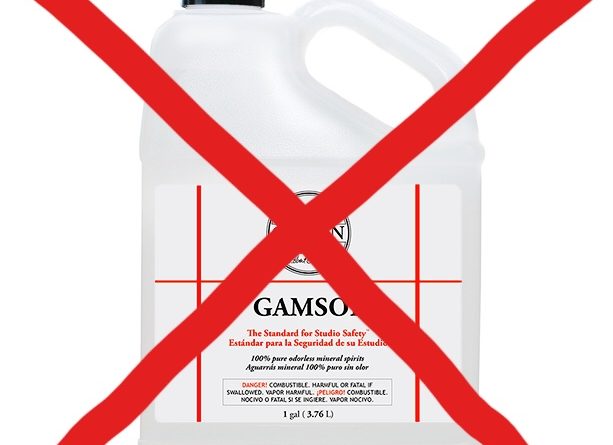Using Solvents to Oil Paint is Not Recommended
Using solvents, like turpentine, gamsol or mineral spirits are often used when painting with oils. Many people are taught to dip their brushes in turpentine between brushstrokes so they don’t contaminate their colors, preserving what is referred to as ‘clean color.’*
As well, many are also taught to clean their brushes with turpentine before a final cleaning with soap and water.
Further investigation reveals that this is not a good idea.
Why Using Solvents to Oil Paint is Not Recommended…
Solvents are meant to cut oil and allow the pigment to be washed out of the brush. When you paint with turpentine, every brushstroke thereafter will be thinned. This compromises the integrity of the paint stroke. Sometimes it can even make oil paint as thin as watercolor. Furthermore, solvents disintegrate the hairs on bristle brushes and are toxic.
What should you use instead?
First use a paper towel to squeeze the paint from your brushes while you are working. In order to keep the color you pick up from your palette from mixing with the color already on your brush, learn to control the pressure you use when applying paint. This is called ‘brush pressure.’
Otherwise, be prepared to use a lot of brushes. This is because you will have to keep your brushes organized with your light-color brushes separate from your dark-color brushes, which can be cumbersome. Although this certainly prevents contaminating your colors, there is a simpler solution. You can find out about this in our blog on Brush Control.
When you clean up, use a mild soap to clean the paint out of your brushes (we recommend Trekell brush care products). This is covered in our blog on how to clean your brushes.
In conclusion, keep your skin and body safe from chemicals as much as possible for safe, healthy painting!
*Look for our blog debunking the myth about ‘clean color’ vs. chalky and muddy colors.


Leave a Reply
You must be logged in to post a comment.